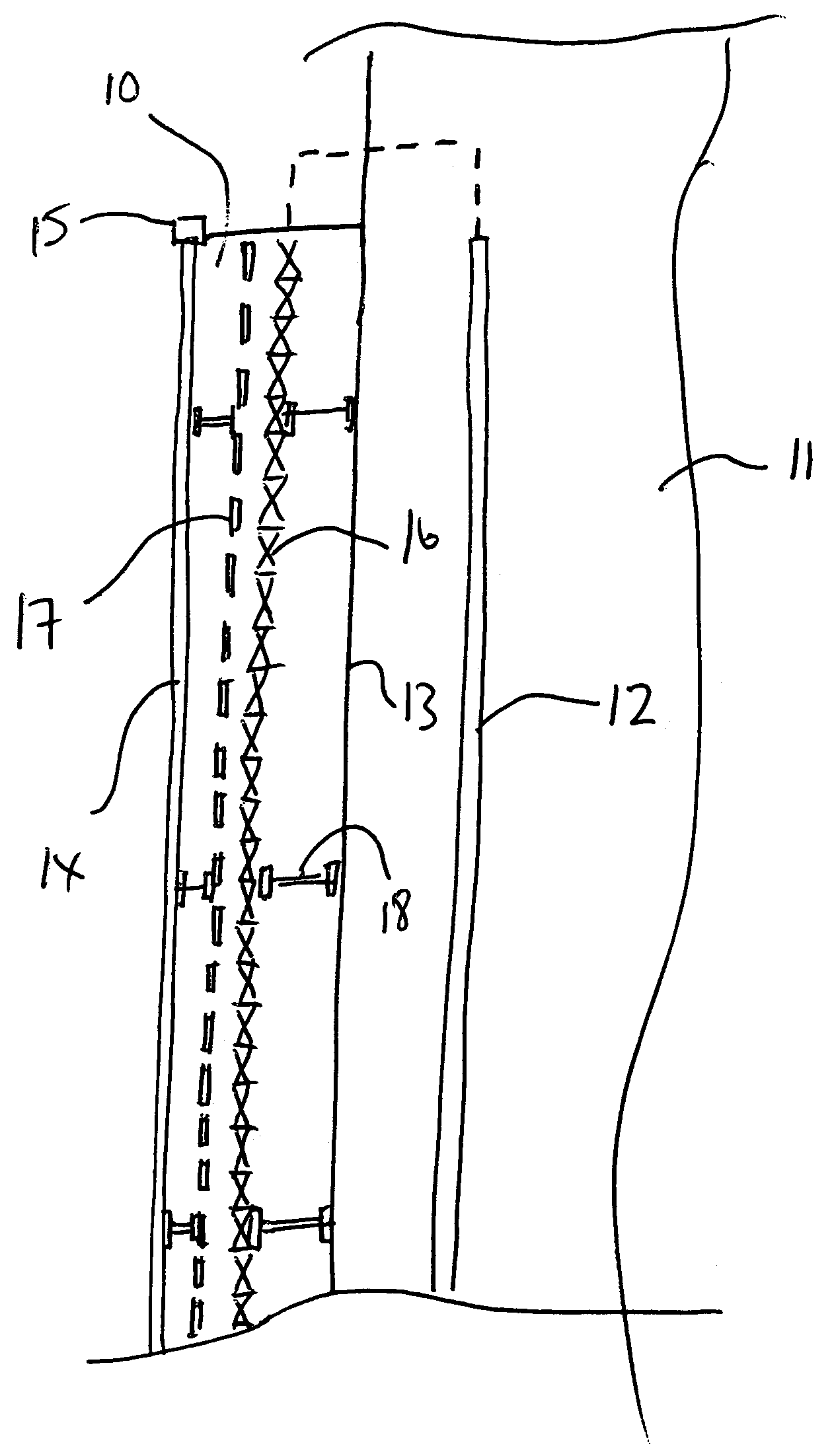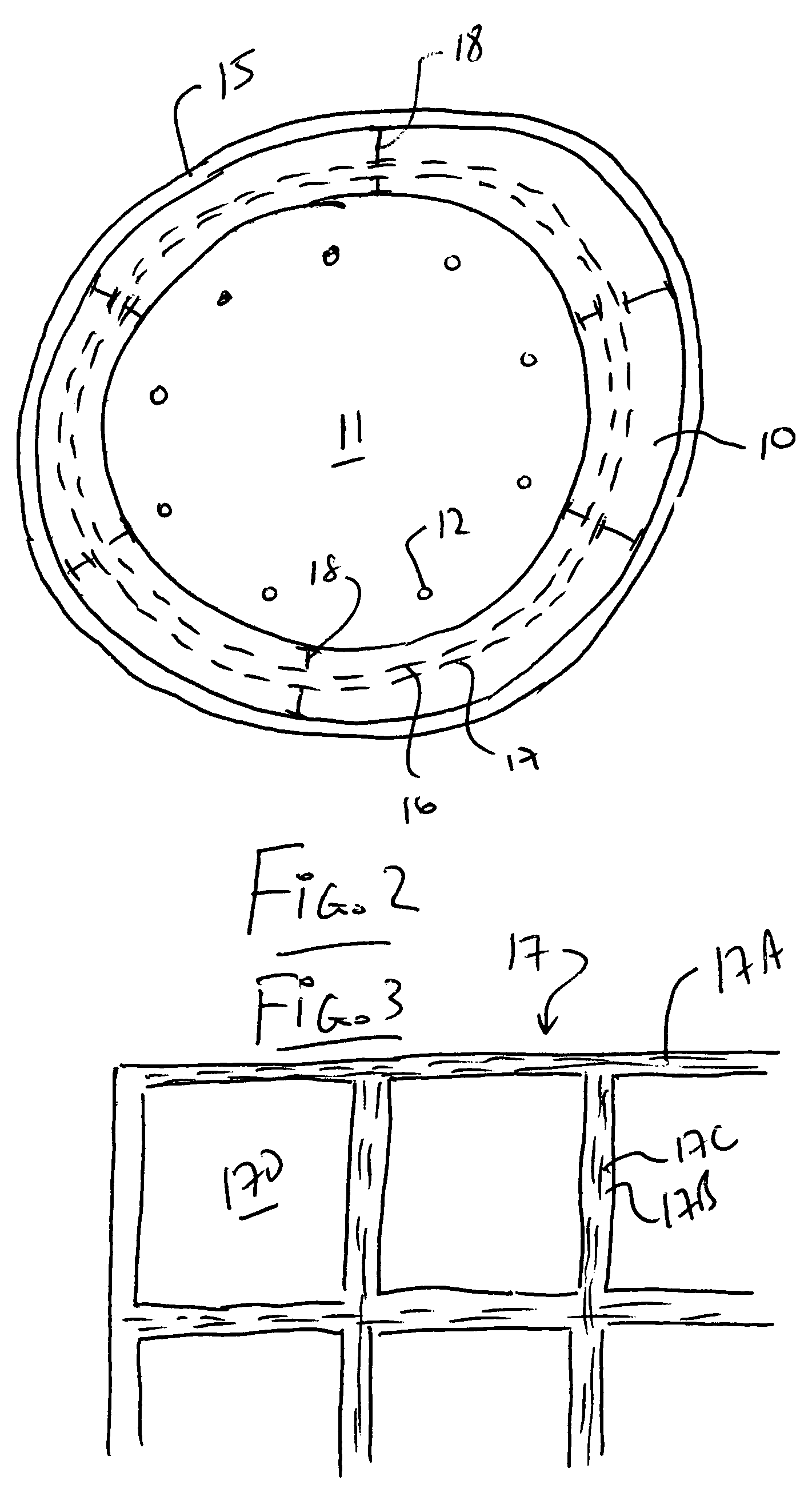Cathodic protection of steel within a covering material
a technology of cathodic protection and covering material, which is applied in the field of cathodic protection of steel within a covering material, can solve the problems of significant cost disadvantage, limited commercial success of this method, and slow diffusion of corrosion products in solid phase, and achieve the effect of increasing the level of corrosion of the anod
- Summary
- Abstract
- Description
- Claims
- Application Information
AI Technical Summary
Benefits of technology
Problems solved by technology
Method used
Image
Examples
Embodiment Construction
[0069]Attention is directed to the disclosure in the above PCT Applications by the present inventor which discloses the manufacture and use of anode bodies including anode materials, enhancement materials and methods of installation. The present embodiments disclosed herein include and use many of the constructions, arrangements and enhancement materials described therein.
[0070]The enhancement materials and the sacrificial anode material, such as zinc, can be pressed together to form a porous body as shown and described in the above applications, to which reference may be made for further details.
[0071]Preferably the anode body is formed simply by pressure on the particulate materials and typically pressures to effect sufficient compaction to maintain an integral structure will be in the range 5,000 psi-to 40,000 psi. Heat is therefore preferably not used but can be used to effect a melting of the particles at the points of engagement to enhance structural integrity. However heat ca...
PUM
| Property | Measurement | Unit |
|---|---|---|
| pressures | aaaaa | aaaaa |
| size | aaaaa | aaaaa |
| length | aaaaa | aaaaa |
Abstract
Description
Claims
Application Information
 Login to View More
Login to View More - R&D
- Intellectual Property
- Life Sciences
- Materials
- Tech Scout
- Unparalleled Data Quality
- Higher Quality Content
- 60% Fewer Hallucinations
Browse by: Latest US Patents, China's latest patents, Technical Efficacy Thesaurus, Application Domain, Technology Topic, Popular Technical Reports.
© 2025 PatSnap. All rights reserved.Legal|Privacy policy|Modern Slavery Act Transparency Statement|Sitemap|About US| Contact US: help@patsnap.com



